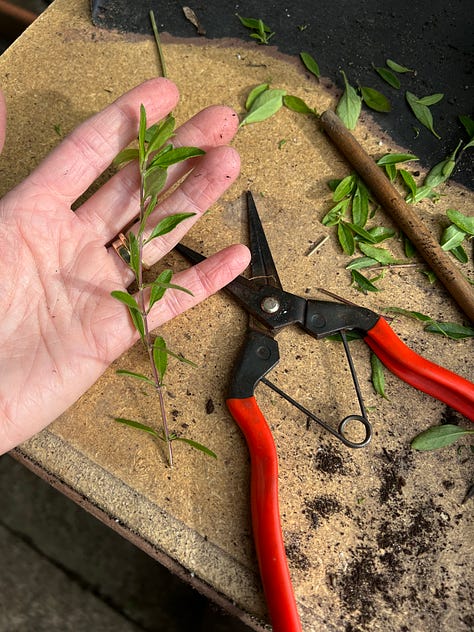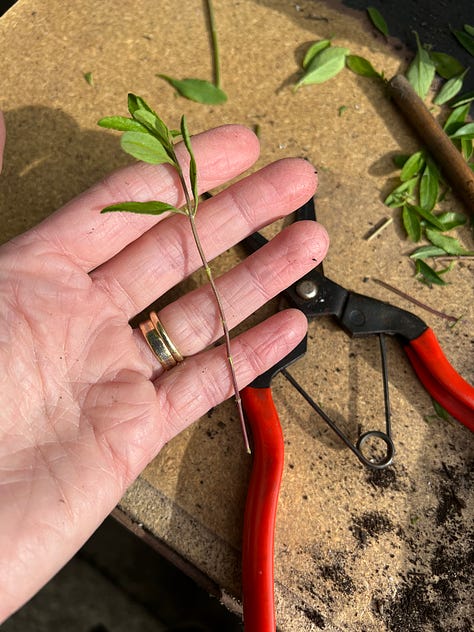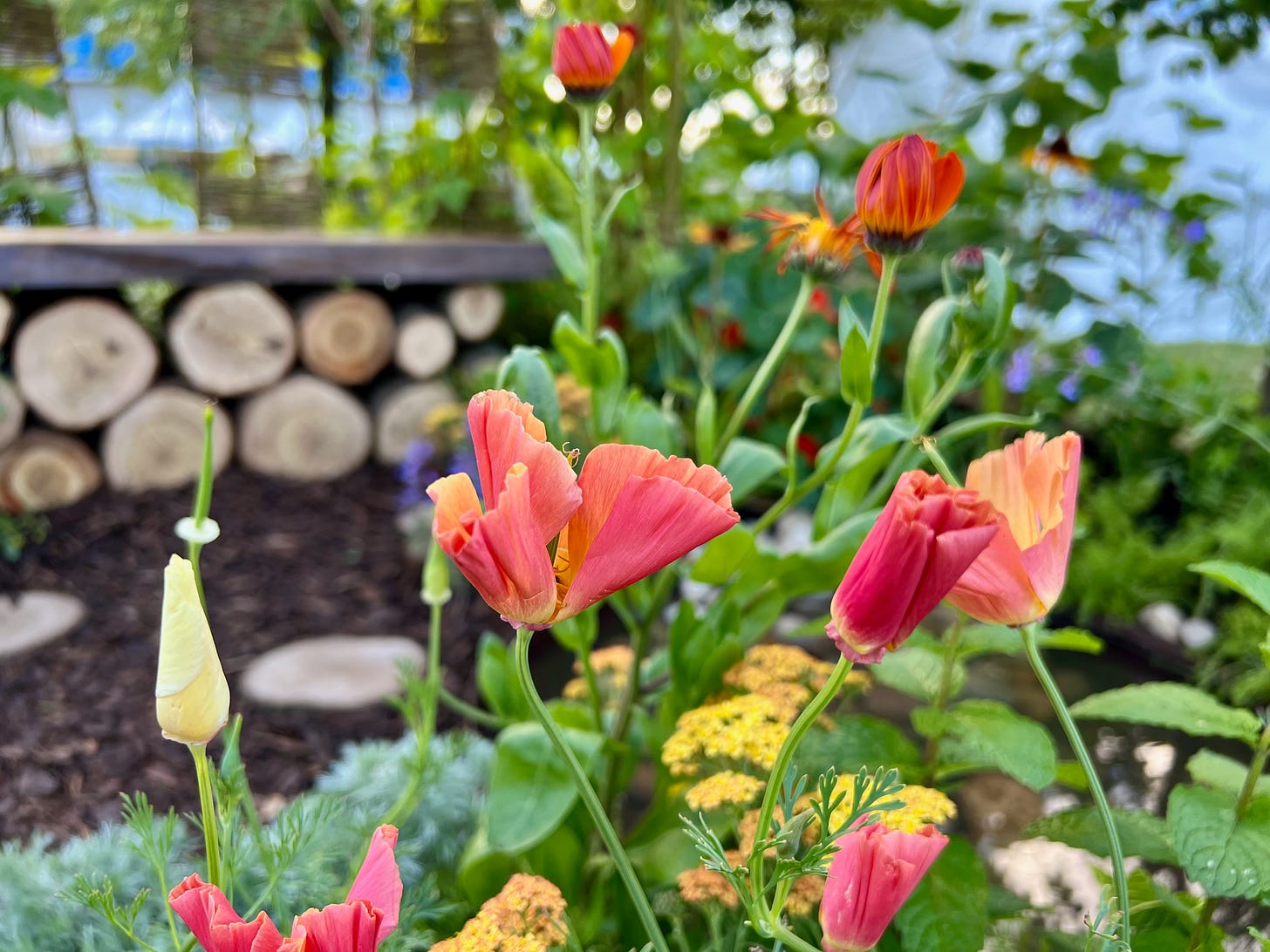Cuttings & California
It's a good time of year to increase your plants by taking cuttings
What’s better than new plants? New plants for free! One of my favourite autumn jobs is to propagate by taking cuttings, creating new plants from those already growing in my garden. It’s a fairly simple process which can not only yield you lots of new plants, but can also boost your confidence as a gardener, as you bring to life new growth from a tiny section of stem. What’s even better is you don’t need any specialist equipment or expert skills.
Although I love to grow from seed, there are some plants which are tricky to germinate and take a long time to develop, however growing from a cutting can give you a head start. Some named cultivars are bred in such a way that they don’t come true from seed - in other words, you can save seed from them and sow it, but the young plants may not look anything like the parent. Taking a cutting means you’re cloning the plant in question, and the new specimen will look exactly like the one it came from.
It’s a suitable way to multiply a wide range of plants, including perennials, herbs, trees and shrubs, and the technique for each type of plant is broadly the same: choose a young, soft shoot of new growth from the main stem and snip a few inches off, removing most of the leaves, except for the top pair. Push the end carefully into a pot filled with cutting compost, or multi-purpose compost mixed with a good measure of horticultural grit or perlite. The soil must be light, to allow plenty of air and give room for the new roots to develop. You can put a number of cuttings into one pot.



The next step is to make sure the cuttings are watered in and then kept in a damp, warm place. This could mean tying a plastic bag loosely over the top, or placing a lid over the pot or tray, to ensure plenty of condensation. Place the cuttings in a sunny greenhouse, cold frame or windowsill, or pop them into a heated propagator.
Once your little stem cuttings are showing signs of growth, with new leaves or buds, check the base of the pot for roots and if they’re beginning to come out of the holes, it’s time to give them a bigger container, and some fresh compost. Later, when they have filled these and are looking like smaller versions of the parent plant, with plenty of bushy leaves and root development, they’ll be ready to go into your beds and borders in the spring.
At this time of year, with autumn approaching, we’re taking ‘semi-ripe’ cuttings. This means the section of new growth you snip might be quite firm at the bottom but still soft and flexible at the top. It’s the perfect technique for plants including lavender, thyme, box, holly, periwinkle and hebes. Autumn is also a good time to take insurance cuttings of more tender perennials which might not make it through winter, should the weather be too harsh. Try it with pentstemon, salvia, verbena and pelargoniums, which otherwise need to be replaced or overwintered under cover.
Once you’ve got the knack it’s a great way to increase your stock of anything which is unusual, rare or hard to find. It’s also great for those plants which are well loved but unidentified due to lost labels!
California sunshine
Colourful, perennial and tough, California poppies bring the sunshine even when the great British summertime lets us down! They suit lots of different styles of garden and are found in restrained shades of white and soft yellow, through to eye-popping orange for a burst of colour or a bright accent amongst more subtle planting. You can sow them now to flower next spring as these are hardy annuals. Mine are already self seeding around, with lots of little plants germinating in the raised beds.
Native to the United States and Mexico, this poppy is the state flower of California, and it’s thought that seeds were introduced to English gardens in the nineteenth century. They thrive in poor soil but need full sun for the flowers to open - on dull days and in the evenings, they’ll close up their petals again.

When they’ve finished flowering, California poppies develop long seed pods which are quite attractive in themselves and will eventually burst open to scatter the seeds inside and gently populate the area around the parent plants if desired. If not, the seedlings are easy to identify and remove.
California poppies are very easy to grow. Simply scatter the seeds in spring or autumn in a sunny, well drained spot and water them in. There’s no need to cover them as they need light to germinate. They’re especially well suited to coastal, gravel or rock gardens; I grow them in a bed which has fairly low nutrient soil, in amongst other wildflowers and pollinator plants, as they’re rich in pollen and attract lots of bees.
One of my favourite varieties of California poppy is ‘Ivory Castle’ - its soft yellow shade is a perfect partner with purple lavender or blue love-in-a-mist. You might prefer the vivid orange and yellows of ‘Sun Shades’ or perhaps the double petals and mixed colours of ‘Jelly Beans’ - a real sweetie! I fell in love with ‘Apricot Chiffon’ after spotting its luxurious coral-pink flowers at Gardeners World Live this summer, and there’s already a packet of seed in my collection, ready and waiting to be sown…
A version of this article appeared in The People’s Friend in 2024




